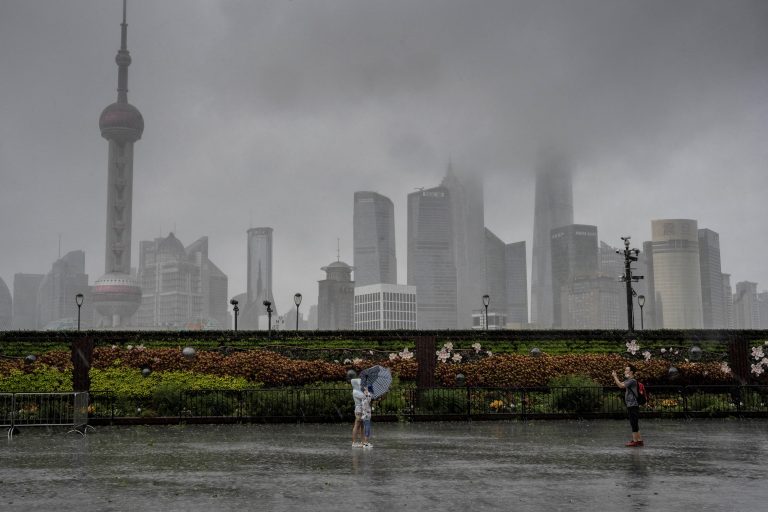Typhoon In-fa — the third typhoon of the 2021 Pacific typhoon season — is scouring China’s east coast, having arrived just south of Shanghai on Sunday, July 25. The hurricane has caused local authorities to evacuate hundreds of thousands of people and forced local airports to ground all flights in and out of the region.
The typhoon made landfall in Zhoushan, a prefecture-level city of approximately 1.1 million people located just south of Shanghai, in Zhejiang Province. The storm was forecasted to bring upwards of 14-inches of rainfall.
Approximately 330,000 residents of Fengxian District in the south of Shanghai were evacuated after wind speeds offshore were recorded to have reached 60 mph, reported China Daily, the English newspaper run by “the Publicity Department of the Chinese Communist Party.”
On Sunday, July 25 hundreds of flights were cancelled at the Shanghai Pudong and Shanghai Hongqiao airports, and more are expected to be cancelled on Monday the 26th.
Southwest of Shanghai, the Hangzhou airport also cancelled all flights.
Success
You are now signed up for our newsletter
Success
Check your email to complete sign up
The typhoon has forced the closing of the riverfront Bund district, a popular tourist spot and train service to Ningbo, a port city south of Shanghai, was suspended, state TV reported. In addition, the Zhoushan Bridge, which connects islands near Ningbo, was closed along with schools, markets and other businesses in Zhejiang Province.
The typhoon’s wind speeds are forecasted to slow down to 35 mph as it moves over land early Tuesday and to continue to decrease down to 15 mph as it moves into the Jingdezhen region early on Wednesday, July 28.
In-fa complicating flood rescue efforts in flood-hit Henan
The typhoon is complicating rescue efforts in Henan Province after the province experienced some of its worst flooding in modern history.
Since July 17, China’s Henan Province has been inundated by severe flooding caused by prolonged heavy rainfall. On Monday, survivors scoured flood debris in search of loved ones lost to the flooding. Netizens “shared dozens of accounts of missing friends and family, conflicting with official reports that said only five people were unaccounted for” reported the Washington Post (WP).
“In the hard-hit city of Zhengzhou, where people died in submerged subway cars, family members continued gathering outside the cordoned-off train stations for news of their loved ones, reluctant to leave,” reported WP.
Nineteen weather stations in the province reported a new daily rainfall record. The city of Zhengzhou, which was particularly hard hit, recorded a record-breaking rainfall of 201.9 millimeters (7.95 inches) in a single hour.
The prefecture-level city of Xinxiang experienced the largest amount of precipitation over a 24-hour period ever recorded in the city’s history, reaching over 260 mm (10 inches) of rainfall.
The prefecture-level city of Kaifeng, in Henan, home to over 4.5 million people, also experienced torrential rainfall forcing local authorities to issue a red rainstorm warning which was upgraded to an orange warning on the afternoon of the 20th.
Casualties unknown but under-reported
The number of casualties due to the widespread flooding is still unknown. Official numbers are suspected of being grossly under-reported.
While the tragedy is still unfolding, so far, 69 people are recorded as deceased and 5 are missing. At least 12 people are reported to have died in the flooded subways of Zhengzhou despite only 6 casualties being reported when the Jingguang North Tunnel, containing hundreds of cars, completely flooded.
Some have estimated that based on the likely number of cars trapped, the death toll in the Jingguang Tunnel may actually number in the thousands.
A subtropical high in the western Pacific and a continental high-pressure area in the Sea of Japan is being partially blamed for the intense rainfall. The China Meteorological Administration is claiming that typhoon In-fa is one of the main reasons for the torrential rains despite being approximately 1,000 kilometers away from Henan province when the flooding began. Although locals reported that authorities opened up a dam near Zhengzhou, which subsequently flooded the Jingguang North Tunnel and was blamed on the rain.














